Blog Posts Tagged Ray Optics Module
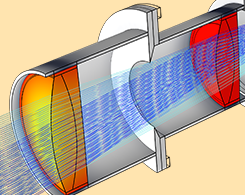
Zeiss, Abbe, and the Evolution of Microscopes and Optical Research
The story of Carl Zeiss and Ernst Abbe involves a picturesque town in Germany, compound microscopes, and a hammer and anvil. See for yourself with a glimpse into the history of optical research.
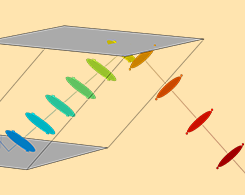
Studying the Polarization of Light with a Fresnel Rhomb Simulation
A Fresnel rhomb is a simple optical system for studying light polarization. Follow along as we simulate linearly, elliptically, and circularly polarized incident light in a Fresnel rhomb.

How to Perform a STOP Analysis with COMSOL Multiphysics®
Interested in structural-thermal-optical performance (STOP) analysis? We go over the theory, background, and how to perform such an analysis in the Ray Optics Module.

Studying Presbyopia with an Optomechanical Model of the Human Eye
You have to see this multiphysics simulation research: To help combat the effects of presbyopia in aging eyes, Kejako built a 3D optomechanical model of a full human eye.
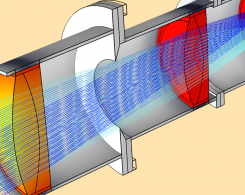
How to Create Complex Lens Geometries for Ray Optics Simulations
Learn how to set up the model geometry for a complex lens system in a way that ensures an effective and successful ray optics simulation.
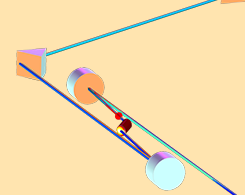
Ray Optics Simulation of Sagnac Interferometers and Ring Laser Gyros
Have you ever been in a revolving restaurant that slowly spins as you dine? This same concept can be used to understand the operating principles of Sagnac interferometers and ring laser gyros.
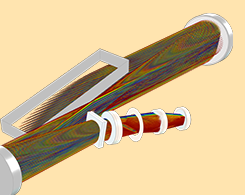
Analyzing White Pupil Échelle Spectrographs via Ray Tracing Simulation
Astronomers use échelle spectrographs to detect far-away planets. To design a white pupil échelle spectrograph with optimized sensitivity, engineers can turn to ray tracing software.

Improving IFE Target Fabrication with a Droplet Microfluidics Method
A common joke is that fusion energy is 30 years away, and always will be. Researchers are using simulation to tackle the challenges involved with of inertial fusion energy target production.
